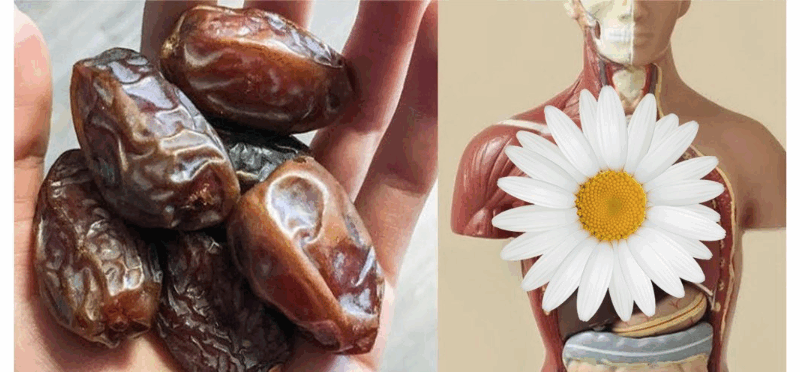Showering is a cornerstone of daily life for many. It’s a ritual we perform almost instinctively — upon rising, before eating, or to relax before sleep. Yet, the timing of your shower can subtly influence your heart health, circulation, and overall safety, particularly as you age.
Health insights and medical research highlight that when you choose to shower can make a difference — especially for older adults. A seemingly routine choice, like showering immediately after waking or post-meal, might place unexpected stress on your heart, blood flow, or balance.
This article explores why this happens and shares practical ways to make your showering routine healthier and safer.
Why Timing Matters More After Age 60
As we grow older, our bodies respond more noticeably to shifts in blood pressure, temperature, and circulation. While a shower can feel invigorating, taking one at an inopportune moment may prompt physical changes that your body handles less effectively than it once did.
This is particularly relevant for those managing:
- High or low blood pressure
- Heart conditions
- Diabetes
- Balance or dizziness concerns
- Medications affecting circulation
When combined with a hot or cold shower, these factors can elevate risks — especially in the isolated environment of a bathroom.
Riskier Times to Shower for Older Adults
Certain times of day can increase the challenges of showering. Here’s why these moments may pose risks:
1. Right After Waking Up
Upon waking, your blood pressure is typically at its lowest, and your body is transitioning from rest to activity. Stepping into a hot shower too soon may lead to:
- Rapid changes in blood pressure
- Lightheadedness or fainting
- Feelings of weakness or confusion
- Greater chance of slipping
Why this happens: Hot water causes blood vessels to widen, which can further lower blood pressure. This may reduce blood flow to your brain and heart at a time when your body is still stabilizing, potentially leading to serious consequences.
What to do instead:
Allow 30 to 45 minutes after waking before showering. Engage in light stretching, drink water, have a small snack, and give your body time to fully adjust to being awake.
2. Immediately After Eating
Many people feel inclined to shower after a meal, especially if it’s part of their routine. However, post-meal, your body directs blood flow to aid digestion. Showering during this period can challenge your body’s ability to manage both digestion and temperature regulation, potentially causing:
- Nausea
- Lightheadedness
- Sudden tiredness
- Reduced blood pressure
This is especially significant after heavier meals high in fats or carbohydrates.
What to do instead:
Wait 40 to 60 minutes after eating before showering. This allows your body to prioritize digestion without the added strain of temperature changes.
Potential Risks of Poor Shower Timing
Showering at less optimal times can lead to avoidable issues, including:
- Sudden low blood pressure (hypotension)
- Loss of balance, increasing the chance of falls on wet surfaces
- Fainting episodes
- Muscle tension or discomfort from sudden water temperature changes
- Heart-related concerns, particularly for those with existing conditions
Falls or fainting in the bathroom are among the leading causes of emergency room visits for older adults, yet these incidents are often preventable with mindful timing and precautions.
Optimal Times for Safer Showers
Certain times of day align better with your body’s natural rhythms, making showering safer and more comfortable:
Mid-Morning (9 a.m. – 11 a.m.)
By mid-morning, your body is fully alert, with stabilized blood pressure and no ongoing digestion. This window is often the most secure and pleasant time for older adults to shower.
Mid-Afternoon (3 p.m. – 5 p.m.)
If you’ve been lightly active earlier, such as walking, mid-afternoon is another great time. Your circulation is steady, and lunch digestion is likely complete.
Practical Tips for Safer Showers
Regardless of when you shower, these steps can significantly enhance safety and comfort:
- Use warm water, avoiding extremes of hot or cold
- Install grab bars near the shower for support
- Place non-slip mats inside and outside the shower or tub
- Keep a shower chair or bench handy for moments of fatigue or dizziness
- Stay hydrated by drinking water before and after showering to support blood pressure
- Ensure proper bathroom ventilation to prevent excessive steam
- Avoid showering alone if you take medications that affect balance or circulation
- Inform someone when you’re showering, especially if you live alone
Guidance for Those with Health Conditions
If you have specific medical concerns, consult your doctor to tailor a safe showering routine. Conditions to discuss include:
- Heart conditions or irregular heart rhythms
- Low blood pressure (hypotension)
- Diabetes, which can affect blood sugar stability
- Frequent dizziness or fainting
- Neuropathy or reduced sensation in limbs
Your doctor can recommend the best times and safety measures based on your unique health profile.
Discussing Shower Safety with Loved Ones
Raising concerns about showering habits with an older family member or spouse can feel challenging, especially if they’ve followed the same routine for years. Here’s how to approach the conversation:
- Speak with kindness and empathy
- Share clear, evidence-based information (like this article)
- Offer to assist with installing safety features like grab bars or mats
- Suggest small changes, such as: “What if you tried showering after breakfast?”
- Offer to be nearby or check in after their shower
The goal is to support their safety while respecting their independence. With a caring approach, most people are receptive to adjustments that enhance their well-being.
Cleanliness Meets Safety
Showering should be a refreshing and calming experience, not a source of worry. By choosing the right time, enhancing your bathroom’s safety, and tuning into your body’s needs, you can transform this daily habit into an opportunity for health and peace of mind.
Caring for yourself means making thoughtful choices at the right moments. Prevention is about empowering yourself to live with confidence and security.




